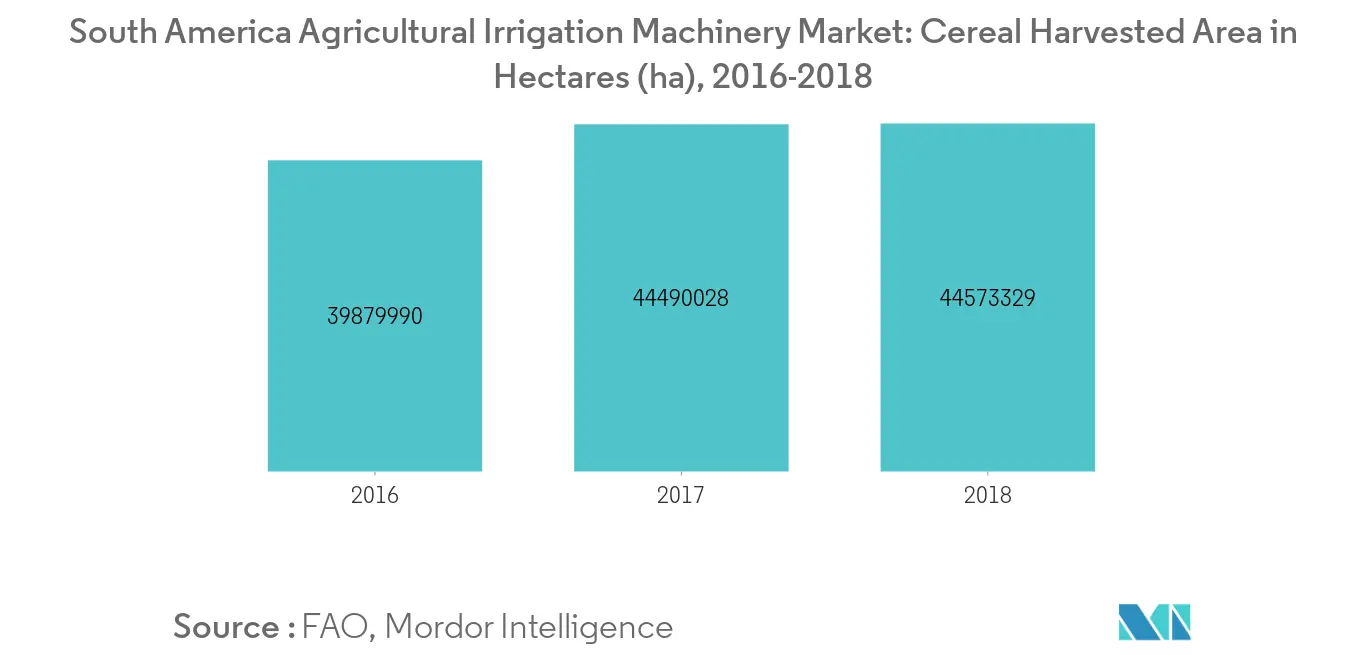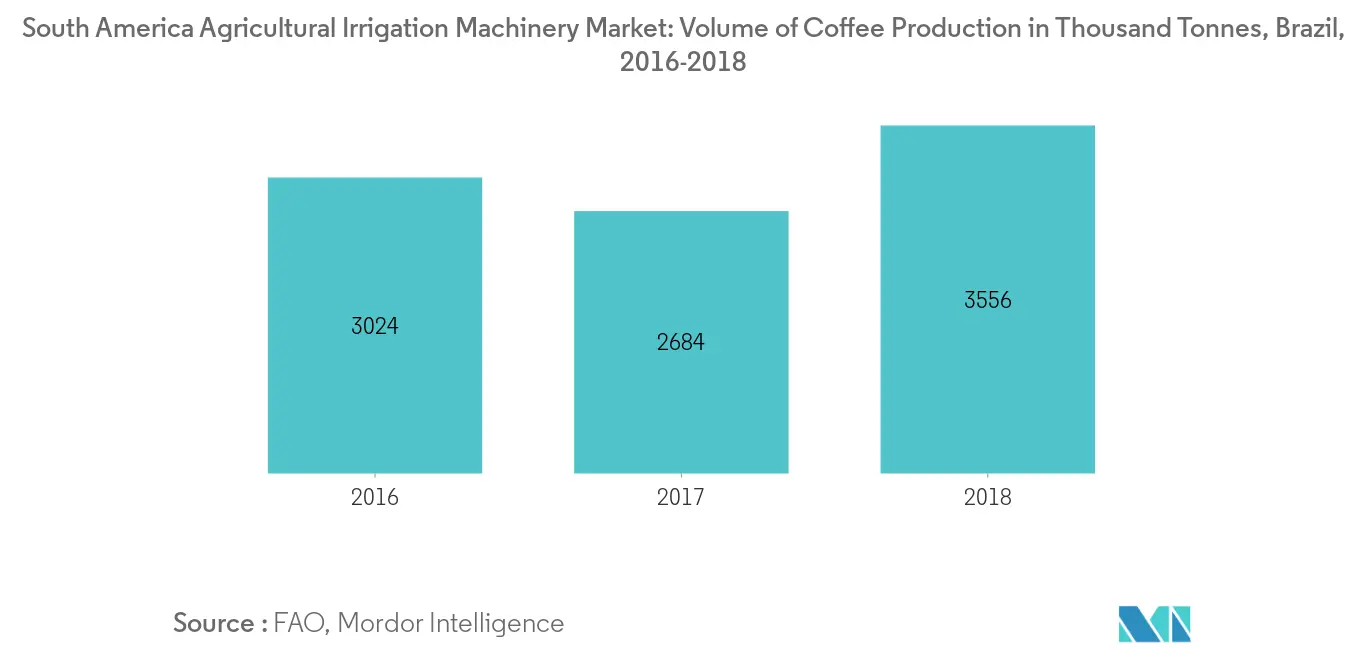Market Trends of South America Irrigation Machinery Industry
This section covers the major market trends shaping the South America Agricultural Irrigation Machinery Market according to our research experts:
Increased Arable Land in the Region
There has been a significant increase in agricultural land under cultivation in the region and as per the studies the region has approx 6 million acres to 7 million acres of agricultural land under the irrigation system. Mostly, subsurface drip irrigation systems are used in the countries to augment fodder maize production. Agricultural mechanization in the country has shifted from traditional tools to sophisticated machinery to meet the targets of capacity enhancement, timeliness of farm operations, and efficient utilization of inputs. This results in enormous financial savings and has lead to higher revenues, in the micro-irrigation systems market. These factors are driving the market for agricultural irrigation machinery. The only factor which may restrict the drip irrigation systems market is its high cost, which farmers have to incur, especially when they are far from the water source. Even banana crops in the country were irrigated by different drip systems in Brazil, and the difference between normal water application and drip irrigation is observed in the effective water extraction zones indicating the effect of soil water distribution as a consequence of the irrigation systems on water extraction by the banana. Thus, most of the crops are covered under this system in the region and therefore this segment is boosting the market growth of the overall agricultural irrigation machinery market.

Increased Implementation in Brazil Coffee Production
Brazil is the world's largest coffee producer and produces around 25% of the world's supply of coffee. Brazil has improved its irrigation systems and farmers have added new species of coffee to revive agriculture in the region to overcome a devastating drought in the year 2016. According to the FAO database, the production of coffee in the country grew from 2684.508 thousand tonnes in 2017 to 3556.638 thousand tonnes in 2018 owing to the demand for coffee in the domestic and international markets. The Brazilian organizations developed technological solutions for the use of water in coffee crops which, in addition to streamlining the use of water, contributed to optimizing productivity, product quality, and reduced production costs. Such technologies, like efficient irrigation systems, contributed to increase coffee farmers' income. Thus, the adoption of irrigation systems led to increased sales of irrigation machinery in the country. This, in turn, would boost the overall agricultural irrigation machinery market.


